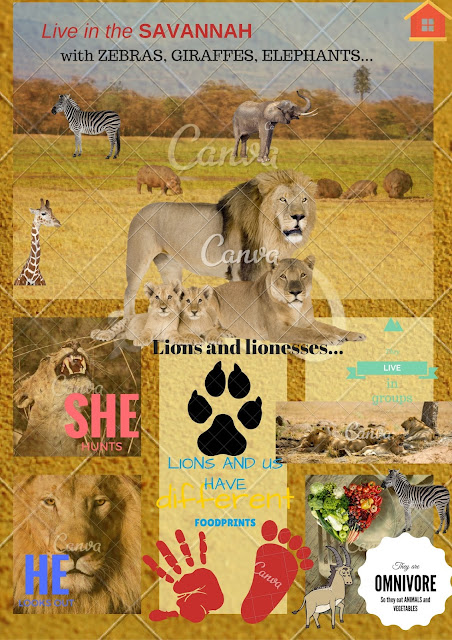1. Web tool
NOTE: I’m going to change the age of my students to
explain better this Task. Students in this class are now from 8 to 10 years
old.
TITLE OF THE TASK: PRESENTATION ABOUT LIONS’ PROJECT
|
AIM OF THE TASK:
Create a presentation using
all content they have learned along the Lions’ project. Also, to increase
their marks, they could compare that content with their ideas before starting
the project.
|
DESCRIPTION OF THE TASK: (What are they going
to do? How are you going to organize them? Steps to follow and final product)
In groups of 3 or 4, students
have to open their session in Prezi –they can use their Facebook account or create
a new account only for Prezi.
When they are connected,
they have to watch the tutorial video paying attention in the steps. Teacher
can let to each group a piece of paper to write down the steps –if they are
lost, teacher can give them the steps or write it down on a blackboard or a
PDI.
When they know the steps
it’s time to start the presentation. We have to take in account that this is
not an easy tool for students, so maybe we could let them two or three
sessions to finish their presentation. During the process teacher will help
students by leaving comments about the presentation.
Finally, when each group
finishes, we can share all the Prezi presentations to the rest of the class –
if we want, we can take advantage to do the Peer’s assessment.
|
WEB TOOL (link):
|
Tutorial about the web tool.
|
2. The Elevator Pitch:

3. My personal thoughts:
In this module I have learnt to use Emaze. In my daily routine I often use ICT and they are really engaging for my students.
→ 3 things I have learnt during this course:
- The importance of collaborative work.
- The necessity of a careful planning for each single step of the whole unit.
- The key-role of scaffolding to guide students and build autonomy.
- I am going to apply this project with my students.
- I am going to introduce more scaffolding language in may day-a-day as a teacher.
- How to adapt unit plans to different ages.
